Goffart, Y; Karelle, S; Daele, J.
European Journal of Plastic Surgery, October 2015, Volume 38, Issue 5, pp 355-362
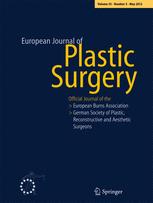 Spreader grafts (SPG) are widely used for different purposes in rhinoplasty procedures. However, selection of the size of the grafts, trimming and fixation often proved time consuming and difficult. We used an original method of placement of “free” SPG to improve both ease of placement and fine trimming of the grafts. To assess pertinence of this approach, we evaluated retrospectively our rate of correction of the middle third of the nose.
Spreader grafts (SPG) are widely used for different purposes in rhinoplasty procedures. However, selection of the size of the grafts, trimming and fixation often proved time consuming and difficult. We used an original method of placement of “free” SPG to improve both ease of placement and fine trimming of the grafts. To assess pertinence of this approach, we evaluated retrospectively our rate of correction of the middle third of the nose.
 La cobertura rápida y eficaz de las lesiones es un factor limitante en el tratamiento de grandes quemados. Los autoinjertos siguen siendo el tratamiento de elección pero no están exentos de riesgos. El uso de sustitutos de piel cultivada (SPC) puede llegar a reducir la morbilidad implícita en el uso de autoinjertos.
La cobertura rápida y eficaz de las lesiones es un factor limitante en el tratamiento de grandes quemados. Los autoinjertos siguen siendo el tratamiento de elección pero no están exentos de riesgos. El uso de sustitutos de piel cultivada (SPC) puede llegar a reducir la morbilidad implícita en el uso de autoinjertos.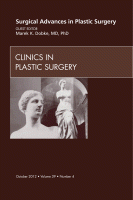 Invasive and noninvasive plastic surgical procedures have undergone exponential growth over the last 30 years, due in part to an expansion of extensive basic and clinical research. The purpose of this article is to examine how plastic surgeons learn to use novel technology in their practices. In addition, a critical evaluation of current teaching methods as they relate to surgeon competence in these new technologies is discussed. Mention of specific technologies is done for demonstrative purposes to illustrate how practitioners of plastic surgery gain competence in their safe and effective use.
Invasive and noninvasive plastic surgical procedures have undergone exponential growth over the last 30 years, due in part to an expansion of extensive basic and clinical research. The purpose of this article is to examine how plastic surgeons learn to use novel technology in their practices. In addition, a critical evaluation of current teaching methods as they relate to surgeon competence in these new technologies is discussed. Mention of specific technologies is done for demonstrative purposes to illustrate how practitioners of plastic surgery gain competence in their safe and effective use.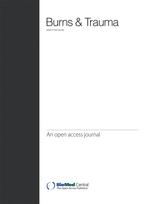 Nowadays, most patients with severe burns will survive their injury. This evolution is accompanied by the challenge to cover a large percentage of total body surface area burned. Consequently, more and more patients have to deal with the sequelae of burn scars and require (multiple) reconstructions. This review provides a gross overview of developments in the field of tissue engineering for permanent burn wound coverage and reconstructive burn surgery, focusing on usage and clinical effectiveness. Not only skin substitutes will be discussed but also the replacement of subcutaneous fat tissue and cartilage.
Nowadays, most patients with severe burns will survive their injury. This evolution is accompanied by the challenge to cover a large percentage of total body surface area burned. Consequently, more and more patients have to deal with the sequelae of burn scars and require (multiple) reconstructions. This review provides a gross overview of developments in the field of tissue engineering for permanent burn wound coverage and reconstructive burn surgery, focusing on usage and clinical effectiveness. Not only skin substitutes will be discussed but also the replacement of subcutaneous fat tissue and cartilage.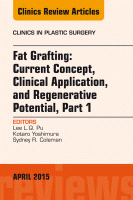 Simultaneous breast augmentation and mastopexy is a common procedure often considered to be one of the most difficult cosmetic breast surgeries. One-stage augmentation mastopexy was initially described more than 50 years ago. The challenge lies in the fact that the surgery has multiple opposing goals: to increasing the volume of a breast, enhance the shape, and simultaneously decrease the skin envelope. Successful outcomes in augmentation can be expected with proper planning, technique, and patient education. This article focuses on common indications for simultaneous augmentation mastopexy, techniques for safe and effective combined procedures, challenges of the procedure, and potential complications.
Simultaneous breast augmentation and mastopexy is a common procedure often considered to be one of the most difficult cosmetic breast surgeries. One-stage augmentation mastopexy was initially described more than 50 years ago. The challenge lies in the fact that the surgery has multiple opposing goals: to increasing the volume of a breast, enhance the shape, and simultaneously decrease the skin envelope. Successful outcomes in augmentation can be expected with proper planning, technique, and patient education. This article focuses on common indications for simultaneous augmentation mastopexy, techniques for safe and effective combined procedures, challenges of the procedure, and potential complications.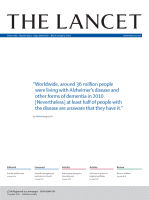 Outcomes of patients with burns have improved substantially over the past two decades. Findings from a 2012 study in The Lancet showed that a burn size of more than 60% total body surface area burned (an increase from 40% a decade ago) is associated with risks and mortality. Similar data have been obtained in adults and elderly people who have been severely burned. We discuss recent and future developments in burn care to improve outcomes of children.
Outcomes of patients with burns have improved substantially over the past two decades. Findings from a 2012 study in The Lancet showed that a burn size of more than 60% total body surface area burned (an increase from 40% a decade ago) is associated with risks and mortality. Similar data have been obtained in adults and elderly people who have been severely burned. We discuss recent and future developments in burn care to improve outcomes of children.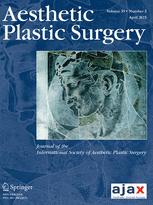 Various techniques are used in rhinoplasty. These techniques can be classified under transcolumellar approaches and endonasal procedures. Open rhinoplasty without transcolumellar incision (ORWTI) procedure can be described as a combination of these two techniques.
Various techniques are used in rhinoplasty. These techniques can be classified under transcolumellar approaches and endonasal procedures. Open rhinoplasty without transcolumellar incision (ORWTI) procedure can be described as a combination of these two techniques. Injuries by high voltage electrocution represent rare and very complex accidents. In order to provide support to surgical therapy, to limit the extension of injuries or to support the natural process of tissue repair, we oriented towards the use of two growth factors, insulin and platelet-enriched plasma (PRP) administered locally, on the injury site. The therapeutic protocol was applied on three cases of electrocution with promising results in reducing the duration of surgical and pharmacological treatment and of time of hospitalization. The influence of growth factors on healing wounds, the mechanism of action and recent therapeutic applications are also discussed.
Injuries by high voltage electrocution represent rare and very complex accidents. In order to provide support to surgical therapy, to limit the extension of injuries or to support the natural process of tissue repair, we oriented towards the use of two growth factors, insulin and platelet-enriched plasma (PRP) administered locally, on the injury site. The therapeutic protocol was applied on three cases of electrocution with promising results in reducing the duration of surgical and pharmacological treatment and of time of hospitalization. The influence of growth factors on healing wounds, the mechanism of action and recent therapeutic applications are also discussed.






 Sitio web publicado el
Sitio web publicado el
Los lectores comentan